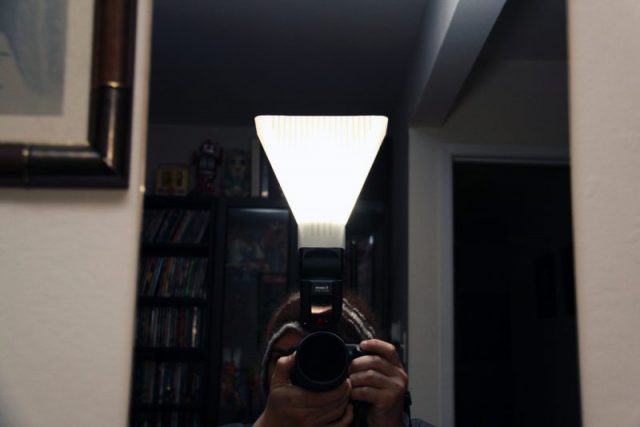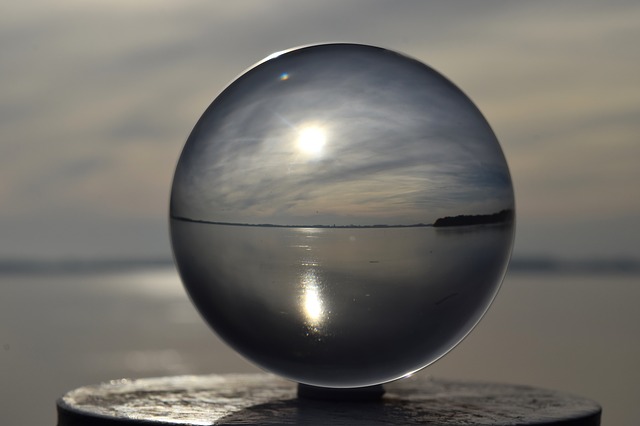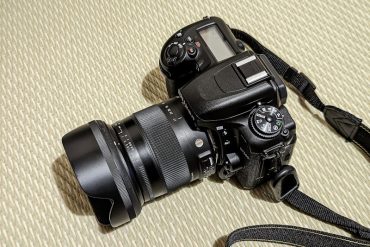For beginners, entering the world of photography can be exciting and overwhelming. Having the right equipment is crucial for starting your photographic journey. Choosing the right gear is like building a strong foundation for a house, allowing you to transform your creative vision into captivating images.
The right equipment helps you capture moments and express your unique perspective through the lens:
- A camera is your accomplice on this visual journey. There are various choices to consider, such as entry-level DSLRs, mirrorless cameras, and compact cameras, each with its own advantages for different types of photography.
- The lens is often overlooked but is crucial for unleashing creativity. Understanding the difference between prime and zoom lenses is important. As a beginner, it’s smart to choose versatile lenses that cover a range of focal lengths, allowing you to experiment and find your preferred style.
- Accessories may seem like extras, but they enhance your photography experience. A sturdy tripod provides stability, reliable memory cards ensure adequate storage, filters add depth to your photos, and cleaning kits ensure your gear lasts longer and performs consistently.
Beginners often worry about their budget when it comes to photography. However, the good news is that you don’t always have to spend a lot of money to get quality gear. There are plenty of affordable options available that offer great performance and features for beginners. The key is to prioritize the essential gear within your budget, as investing in quality basics will provide a strong foundation for your photography journey.
Essential Photography Equipment for the Beginners
I- Camera Options for Beginners
For those starting out in photography, selecting the appropriate camera is crucial. With a plethora of choices available, each tailored to specific preferences and shooting techniques, it can be overwhelming.
When choosing a brand, it’s helpful to go with the same one as your friends for lens sharing. But if you don’t have that option, don’t worry! Any brand you choose will be satisfying. Beginner cameras can all capture similar images that can be edited to look the same, however, video recording capabilities vary.
Here are three main categories that are perfect for beginners: entry-level DSLRs, mirrorless cameras, and compact cameras. Let’s delve into them.
A- DSLR Cameras
Beginner-friendly DSLRs, also known as entry-level DSLRs (Digital Single-Lens Reflex), are a great choice for aspiring photographers. These cameras combine ease of use with advanced features, making them perfect for beginners.
With interchangeable lenses, they offer flexibility in capturing different types of scenes. Moreover, entry-level DSLRs often come with manual control options, allowing users to gradually learn and explore different settings.
I have compiled a selection of the top beginner camera bodies for each brand.
Canon T7

The Canon EOS Rebel T7 is an entry-level DSLR camera that is perfect for beginners who are looking to take their photography to the next level. It is packed with features that make it easy to capture high-quality images and videos, even in low-light conditions.
Key Features
- 24.1MP APS-C CMOS Sensor
- DIGIC 4+ Image Processor
- 3.0″ 920k-Dot LCD Monitor
- Full HD 1080/30p Video Recording
- 9-Point AF with Centre Cross-Type Point
- ISO 100-6400, Up to 3 fps Shooting
- Built-in Wi-Fi with NFC
- Scene Intelligent Auto Mode
- Creative Filters and Creative Auto Modes
Canon EOS Rebel SL3

The Canon EOS Rebel SL3 is an entry-level DSLR camera that was released in April 2019. It is the successor to the Rebel SL2 and features a number of improvements, including a 24.1-megapixel sensor, 4K video recording, and a vari-angle touchscreen LCD. The SL3 is also the lightest and smallest Canon EOS DSLR camera to date.
Key Features
- 24.1MP APS-C CMOS Sensor
- DIGIC 8 Image Processor
- 3.0″ 1.04m-Dot Vari-Angle Touchscreen
- UHD 4K24p Video and 4K Time-Lapse Movie
- 9-Point AF System; Dual Pixel CMOS AF
- ISO 100-25600, Up to 5 fps Shooting
- Built-in Wi-Fi and Bluetooth
Nikon D3500

The Nikon D3500 is an entry-level DSLR camera that was released in 2018. It has a 24.2-megapixel APS-C CMOS sensor, an EXPEED 4 image processor, and a native ISO range of 100-25,600. The camera can shoot continuous stills at 5 frames per second and can record Full HD video at 1080/60p.
Key Features
- 24.2MP DX-Format CMOS Sensor
- EXPEED 4 Image Processor
- No Optical Low-Pass Filter
- Native ISO 100-25600; 5 fps Shooting
- 3.0″ 921k-Dot LCD Monitor
- Full HD 1080p Video Recording at 60 fps
- Multi-CAM 1000 11-Point AF System
- SnapBridge Bluetooth Connectivity
- Guide Mode and Special Effects
Nikon D5600

The Nikon D5600 is a 24.2-megapixel DX-format CMOS sensor DSLR camera that was released in 2016. It is the successor to the D5500 and features a number of improvements, including a new EXPEED 4 image processor, a 3.2-inch 1.037 million-dot vari-angle touchscreen LCD, and full HD 1080p video recording at 60 fps.
Key Features
- 24.2MP DX-Format CMOS Sensor
- EXPEED 4 Image Processor
- 3.2″ 1.037m-Dot Vari-Angle Touchscreen
- Full HD 1080p Video Recording at 60 fps
- Multi-CAM 4800DX 39-Point AF Sensor
- ISO 100-25600 and 5 fps Shooting
- SnapBridge Bluetooth and Wi-Fi with NFC
- Time-Lapse Movie Recording
B- Mirrorless Cameras
Mirrorless cameras are becoming increasingly popular with beginners because of their small size and impressive performance. Unlike DSLRs, these cameras don’t have a bulky mirror mechanism, making them more portable and lightweight.
Despite their compactness, mirrorless cameras still produce high-quality images and offer advanced features similar to DSLRs. Without the mirror, these cameras have electronic viewfinders that give a real-time preview of exposure and depth of field, which can be helpful for beginners who are learning and improving their photography skills.
I have compiled a selection of the top beginner camera bodies for each brand.
Canon EOS R100

The Canon EOS R100 is a compact and lightweight mirrorless camera that is designed for beginners and enthusiasts. It has a 24.1MP APS-C CMOS sensor, a DIGIC 8 image processor, and a Canon RF mount. The camera can shoot stills at up to 10 frames per second and record Full HD video at up to 60 frames per second. It also has built-in Wi-Fi and Bluetooth for easy connectivity.
Key Features
- 24.2MP APS-C CMOS Sensor
- DIGIC 8 Image Processor
- 4K 24p Video with Crop, Full HD 60p
- Dual Pixel CMOS AF with 143 AF Zones
- 6.5 fps Electronic Shutter
- 2.36m-Dot OLED EVF
- 3″ 1.04m-Dot LCD Screen
- Wi-Fi and Bluetooth with SD Card Slot
Canon EOS R50

The Canon EOS R50 is a compact and lightweight mirrorless camera designed for content creators and vloggers. It features a 24.2MP APS-C CMOS sensor, DIGIC X image processor, and RF mount. It can record 4K video at up to 30fps and Full HD video at up to 120fps. It also has a vari-angle touchscreen LCD, electronic viewfinder, and built-in Wi-Fi and Bluetooth connectivity.
Key Features
- 24.2MP APS-C CMOS Sensor
- DIGIC X Image Processor
- UHD 4K 30p Video Recording
- Dual Pixel CMOS AF II with 651 Points
- 2.36m-Dot Electronic Viewfinder
- 3.0″ 1.62m-Dot Vari-Angle Touchscreen
- 15 fps Electronic Shutter
- Movie for Close-Up Demos Mode
- Vertical Movie Mode
Nikon Z 30

The Nikon Z 30 is a mirrorless camera designed for content creators, vloggers, and streamers. It is compact, lightweight, and easy to use, making it a great option for those who are new to photography or videography.
Key Features
- 20.9MP DX-Format CMOS Sensor
- UHD 4K30p and Full HD 120p Video
- Live Stream at 60p, In-Camera Time-Lapse
- Vlogging-Optimized Design
- Hybrid AF with Eye and Face Detection
- 3″ 1.04m-Dot Free-Angle Touchscreen LCD
- ISO 100-51200, Up to 11 fps Shooting
- Built-In Stereo Mic, Ext. Mic Compatible
- Tally Lamp and Dedicated Selfie Controls
Sony a6000

The Sony a6000 is a mirrorless interchangeable lens camera that was first released in 2014. It is a popular choice for amateur and enthusiast photographers due to its compact size, high image quality, and fast autofocus performance.
Key Features
- 24.2MP APS-C Exmor CMOS Sensor
- BIONZ X Image Processor
- UHD 4K30p Video with HLG & S-Log3 Gammas
- XGA Tru-Finder 2.36m-Dot OLED EVF
- 3.0″ 921.6k-Dot 180° Tilting Touchscreen
- 5-Axis SteadyShot INSIDE Stabilization
- Up to 11-fps Shooting, ISO 100-32000
- 4D FOCUS with 425 Phase-Detect Points
- Real-Time Eye AF for Stills and Video
- Headphone & Mic Ports, Wi-Fi & Bluetooth
C- Compact Cameras
Compact cameras, also known as Point-and-shoot cameras, are the perfect choice for those who value simplicity and convenience. These cameras are lightweight, easy to carry around, and usually have fixed lenses.
Although they may not have the flexibility of interchangeable lenses, compact cameras are great for capturing everyday moments effortlessly. They are ideal for beginners who want a straightforward shooting experience without the complications of interchangeable lenses and settings.
I have compiled a selection of the top beginner camera bodies for each brand.
Canon PowerShot SX740 HS

The Canon PowerShot SX740 HS is a compact superzoom camera with a 40x optical zoom lens, equivalent to 24-960mm in 35mm format. It has a 20.3-megapixel back-illuminated CMOS sensor and a DIGIC 8 image processor, which enables it to shoot 4K video at 30p and 10fps still photos.
Key Features
- 20.3MP CMOS Sensor
- DIGIC 8 Image Processor
- 24-960mm (35mm Equivalent)
- 40x Optical Zoom with OIS
- 3″ Tilting LCD Display
- ISO 100-3200 (Extended)
- 4K Video and 4K Time-Lapse Recording
- Wi-Fi and Bluetooth Connectivity
- 10-fps Continuous Shooting
Canon PowerShot G7X Mark III

The Canon PowerShot G7 X Mark III is a premium compact camera with a new 20.1MP 1-inch stacked CMOS sensor and a 24-100mm equivalent f/1.8-2.8 lens. It is a significant upgrade over its predecessor, the G7 X Mark II, with improved image quality, performance, and video capabilities.
Key Features
- 20.2MP 1″ Stacked CMOS Sensor
- DIGIC 8 Image Processor
- 4.2x Optical Zoom f/1.8-2.8 Lens
- 24-100mm (35mm Equivalent)
- 3.0″ 1.04m-Dot Tilting Touchscreen LCD
- UHD 4K30p and Full HD 120p Video
- 20-fps Shooting, 30-fps Raw Burst Mode
- Built-in Bluetooth and Wi-Fi
- Live Streaming & Vertical Video Support
Nikon COOLPIX P1000

The Nikon COOLPIX P1000 is a bridge camera with an incredible 24-3000mm equivalent focal length, making it the camera with the longest zoom lens in the world. This makes it ideal for wildlife photography, sports photography, and any other situation where you need to get close to a distant subject.
Key Features
- NIKKOR 24-3000mm Lens (35mm Equivalent)
- Aperture Range: f/2.8-8
- 16MP BSI CMOS Sensor
- EXPEED Image Processor
- ISO 100-6400
- 2.36m-Dot OLED EVF
- 3.2″ 921k-Dot Vari-Angle LCD Monitor
- 4K UHD Video Recording
- SnapBridge via Wi-Fi or Bluetooth
- Auto, Aperture, Shutter & Manual Modes
Sony RX100 VII

The Sony RX100 VII is a premium ultra-compact camera with a 24-200mm equivalent zoom lens. It is the most versatile and capable camera in the RX100 series, offering excellent image quality, fast autofocus and continuous shooting, and high-quality 4K video recording.
Key Features
- 20.1MP 1″ Exmor RS BSI CMOS Sensor
- BIONZ X Image Processor & Front-End LSI
- ZEISS Vario-Sonnar T* f/2.8-4.5 Lens
- 24-200mm (35mm Equivalent)
- Up to 20-fps Blackout-Free Shooting
- UHD 4K30p Video with HLG & S-Log3 Gammas
- 0.39″ 2.36m-Dot OLED Pop-Up EVF
- 3.0″ 921.6k-Dot 180° Tilting Touchscreen
- Fast Hybrid AF, 357 Phase-Detect Points
- Real-Time Tracking and Eye-AF
II- Camera Lenses
DSLRs (Digital Single-Lens Reflex) and mirrorless cameras offer the option to change lenses to provide photographers with versatility, flexibility, and customization in their photography.
Using different lenses provides various focal lengths, apertures, and functions, allowing photographers to adapt to different shooting situations, experiment with different perspectives and styles, achieve specific visual outcomes, and control the final image. As photographers progress and their skills evolve, the ability to switch lenses allows for growth and adaptation. So, Let us take an overview of the types of lenses.
A- Prime vs. Zoom Lenses
In photography, there are two main types of lenses: prime and zoom. Prime lenses have a fixed focal length and offer a specific field of view, known for their sharpness and ability to capture details. They require photographers to physically move for different shots, promoting creativity.

On the other hand, zoom lenses provide versatility with a range of focal lengths in one lens. They allow photographers to zoom in and out, making them suitable for various shooting situations. While they may not have wide apertures like prime lenses, modern zoom lenses still offer good quality and convenience for beginners who want to experiment with different compositions without changing lenses.

B- Focal Lengths and Their Applications
Knowing the significance of focal length is crucial in choosing the appropriate lens for various photography styles. Shorter focal lengths are great for capturing wide landscapes and architecture, while longer focal lengths are better for portraits and faraway subjects.
The lenses can be classified into 4 groups according to their focal length:
- Wide Angle 24-35mm: are perfect for capturing vast landscapes or tight interior spaces.
- Standard 35mm-70mm: this focal length range will reproduce what our eyes see. It is suitable for shooting street photography, environmental portraits, and group portraits.
- Mild Telephoto 70-105mm: This is a good range for portrait photography. It is also suitable for Close-up photography or macro photography.
- Telephoto 105-400mm: Lenses in this range are often used for distant scenes such as sports, wildlife, and bird photography.
C- Recommended Lenses for Beginners
For beginners, a versatile lens that covers a large range of focal lengths proves invaluable. A zoom lens, such as an 18-135mm is an excellent starting point. It allows for capturing wide-angle shots as well as moderate telephoto images, catering to a variety of shooting scenarios. The following lenses are popular picks:
- Canon EF-S 18-135mm f/3.5-5.6
- Sigma 17-70mm f/2.8-4 DC Macro OS HSM
- Nikon 18-135mm f/3.5-5.6G ED-IF AF-S DX
Below, A short video of sample photos of Canon EF-S 18-135mm f/3.5-5.6
Additionally, prime lenses with fixed focal lengths like 35mm or 50mm are fantastic choices for beginners. These lenses often have wider apertures, enabling beautiful depth-of-field effects and performing admirably in low-light conditions. They also encourage creativity by challenging you to compose shots more deliberately. The following lenses are popular picks:
Below, A short video of sample photos of Canon EF 50mm f/1.8 STM
III. Accessories for Beginner Photographers
1- Tripods

Photo by PhotoMIX Company
For novice photographers, tripods are essential tools that often go unnoticed. They offer stability, guaranteeing clear and crisp images, particularly in dim lighting or when utilizing slower shutter speeds.
Choose a durable and lightweight tripod that complements your camera configuration. It not only helps in capturing stable shots but also enables innovative compositions and extended exposure photography, unlocking new artistic opportunities. My recommended one is “Amazon Basics 60-Inch Tripod“
You can also check the post “Best Tripods in 2023 – Top 5 For Sharper Photos!” for more options.
2- Memory Cards

Photo by Erik Mclean
Your cherished memories are stored in memory cards. It’s important for newbies to select a memory card with enough space and speed. Go for SD cards with Class 10 or higher and ample storage to meet your photography requirements. Moreover, having backups or external storage options such as cloud storage or hard drives guarantees the safety and accessibility of your valuable pictures.
Check the post “Best Memory Cards – Digital Cameras” for detailed information about recommended memory cards.
3- Filters for Enhancing Photography
Filters are add-ons that can greatly improve your photography. For example, a polarizing filter reduces glare and enhances colors, making the sky look more vibrant.
Neutral Density (ND) filters enable longer exposures in bright conditions, creating artistic effects like smooth waterfalls or blurred motion during the day.
Graduated filters assist in balancing exposure in landscapes with different light intensities. Trying out different filters can bring more depth and richness to your pictures.
You may check the following posts for more information:
- The Best Polarizing Filters For All Budgets
- Best Neutral Density Filters – Use Long Exposure In The Morning
- Camera Lens Filters Explained – Your Full Guide
4- Camera Bag:

A camera bag serves as more than just a way to transport your equipment. It acts as a secure shelter for your gear, providing protection from impacts, scratches, and the elements. A high-quality camera bag not only stores your camera body and lenses but also offers padding and compartments to keep them safe.
This is particularly important for photographers who are often on the go, as it provides convenience, organization, and peace of mind for your valuable gear.
You may check the following posts for more information:
- Top Rated Camera Bags – The Best 6 In 2023
- Camera Bags for Women Photographers – 8 Unique & Colorful Bags
- The Best Camera Bags for Hiking
5- Camera Strap:
A camera strap might seem like a simple accessory, but it’s crucial for carrying your camera comfortably and securely. It allows you to have your camera at hand while distributing its weight across your body, reducing strain on your neck or shoulders during long shooting sessions. Camera straps also prevent accidental drops, ensuring the safety of your gear while keeping it easily accessible for quick shots.
Check the post “Best Camera Straps for DSLR”
6- Cleaning Kits and Maintenance

Photo by Roger Brown
It is crucial to take good care of your photography equipment to make it last longer and perform at its best. Get a cleaning kit that includes a blower, lens cloth, and cleaning solution. By regularly cleaning your lenses, sensors, and camera bodies, you can keep your images free from dust and avoid any potential damage. Also, make sure to follow the manufacturer’s guidelines for camera maintenance, like avoiding extreme temperatures or humidity, to ensure the longevity of your gear.
My favorite cleaning kit is the “Professional Camera Cleaning Kit for DSLR Cameras“
Also, you may check the post “How to Take Care of DSLR Camera” for more information
Budget Considerations for Beginners
A- Cost-effective options without compromising quality
You don’t have to spend a lot of money to start your photography journey. There are plenty of affordable options available that offer great quality without compromising performance.
One way to save money is to look for entry-level kits or bundles that come with essential gear like a camera body, a basic lens, memory cards, and sometimes even a tripod or cleaning kit. These kits often offer a more cost-effective package deal compared to buying each item separately.
You can opt for refurbished or older camera models and lenses from reliable sellers or manufacturers. These options can give you excellent value for your money while still delivering decent performance.
Moreover, you can also consider buying second-hand equipment. Many photographers upgrade their gear and sell their gently used equipment at reasonable prices. Just make sure to buy from trustworthy sources and thoroughly inspect the condition of the items before making a purchase.
My recommended place is Keh, it is a great option to get a used one at a reasonable price. Read the full review here.
B- Tips for prioritizing essential gear within a budget
- Prioritize the essentials: Start with a reliable camera body and a versatile lens that suits your needs, without necessarily going for the latest model. Remember, it’s the photographer’s skill that matters, not just the camera.
- Choose a versatile lens: Opt for a standard zoom lens or a prime lens with a moderate focal length. This way, you can cover various shooting scenarios without the need for multiple lenses.
- Quality memory cards: Invest in memory cards with sufficient storage capacity, but they don’t have to be the most expensive ones on the market.
- Delay accessory purchases: Hold off on buying accessories like filters or specialized tripods until you have more experience and a clearer understanding of your specific requirements.
- Look out for sales and discounts: Keep an eye on seasonal sales, promotions, or discounts offered by photography gear retailers. Timing your purchases strategically can help you get quality gear at discounted prices.
Conclusion
Starting in photography requires the right equipment, but it’s not just about owning gear. Find tools that align with your artistic vision and allow you to tell stories through captivating images.
Understand your needs and preferences when choosing camera bodies, lenses, and accessories. Budget constraints shouldn’t hold you back; there are affordable options available without compromising on quality.
However, your creativity, curiosity, and willingness to learn are the true driving forces behind your photographic journey. Embrace the learning process, cherish the moments you capture, and continue to evolve in this endlessly inspiring realm of photography.
Related posts
What Is The Best Canon Camera For Beginners?
Best Nikon Camera For Beginners- The Top Six Picks
What Is The Best DSLR Camera For Beginners
Thanks for reading, I hope you enjoyed the article, if you have any questions just drop them below & I will be happy to answer you.
The featured photo by Depositphotos
If you enjoy the site, don’t forget to subscribe, we will only inform you when a new article is posted.











